Video summary
14-year-old Simran tells us about some of the traditions and symbolism that make up a Hindu wedding ceremony.
They mark the bringing together of two families and two communities, and have a very large number of guests.
Simran shows us pictures of her auntieβs wedding in India, and we meet Nikki and Hemal, a young couple who are planning their Hindu wedding in the UK.
We see traditions such as henna hand painting, getting married under a canopy called a mandap, and the couple walking around a fire tied together.
The wedding day is about the excitement of dancing and having fun with family and friends, but also about expressing love and creating a new partnershi
This is from the series: My Life, My Religion - Hinduism
Teacher Notes
There are ten examples of different symbols and meanings featured in the clip.
Thereβs no exhaustive list of these: practice is very varied in both the UK and India.
Pupils could watch the clip with the list of ten meanings in front of them, and to try to notice, remember and understand what the symbols they see actually mean.
When they have finished, they could discuss, then write about the symbols they liked best: what symbols best express the meaning of two Hindu people getting married?
10 Symbols and meanings featured in the clip:
β’Henna hand pattern painting: the darker the henna, the deeper the love.
β’ A canopy called a mandap: two people setting up their new home and life together.
β’ Standing together: keeping the good energy in and the bad energy out.
β’ Hemal has his shoes stolen by the brideβs family, after the ceremony heβll have to pay to get them back: a fun way to show the two families are linking up
β’ Hemalβs face is hidden so he doesnβt see the Nikki before the ceremony: itβs not all about looks.
β’ Nikki wears traditional Indian dress: white symbolises purity and red is for fertility, for children.
β’ Hemal and Nikki are treated like a King and Queen for the day: itβs their once in a lifetime βbig dayβ.
β’ Nikki and Hemal walk around the sacred fire four times: they are united together and protected.
β’ Hemal draws a sindoor on Nikkiβs head, and gives her a special necklace: two symbols that show a woman is married.
β’ Nuts or steps are shared together: Each nut represents a different quality that a couple need in their new life together.
β’ The couple taking seven steps round the fire, tied together: these steps symbolise the qualities with which each partner will try to treat the other.
These clips will be relevant for teaching Religious Education at KS2 in England, Wales and Northern Ireland and First and Second Level in Scotland.
Celebrating the festival of Holi. video
This short film explains why Hindu children throw paint and have bonfires at Holi, which is a spring festival, and explains what the celebrations are like in Leicester.
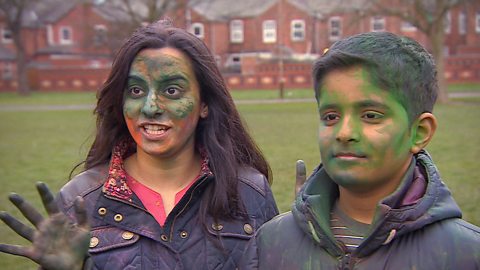
A Pilgrimage in Hinduism video
Hindu pilgrimages are many and varied. Simran and Vraj describe their experiences.
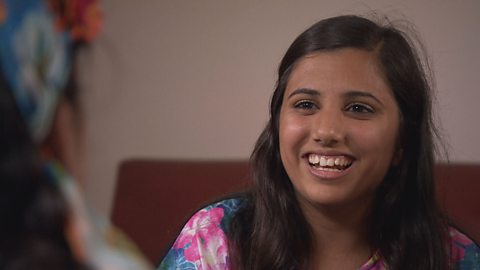
The Cycle of Birth and Rebirth. video
Hindus believe life is a cycle of birth, death, and rebirth.
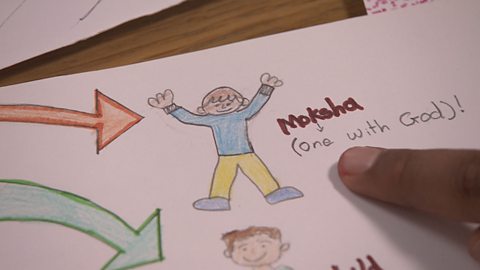
Meeting two young British Hindus. video
Simran, aged 14, introduces herself and her Hindu religion. Her brother Vraj is 11.

Celebrating Raksha Bandan. video
Sisters tie a Rakhi to their brothersβ wrists to celebrate their love for their family.
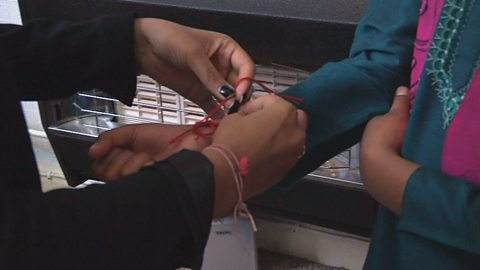
Inside a Hindu Temple. video
This short film explores Hindu religion through worship described by 11 year old Vraj. Striking visuals show what happens at a Hindu temple.
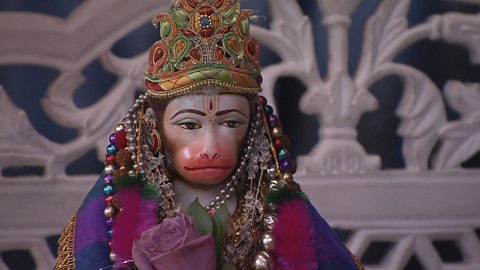
Diwali - the festival of light. video
Hindus Vraj and Simran explain how they celebrate the festival of Diwali.
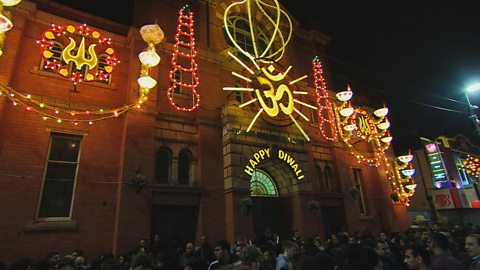
Μύ
Μύ